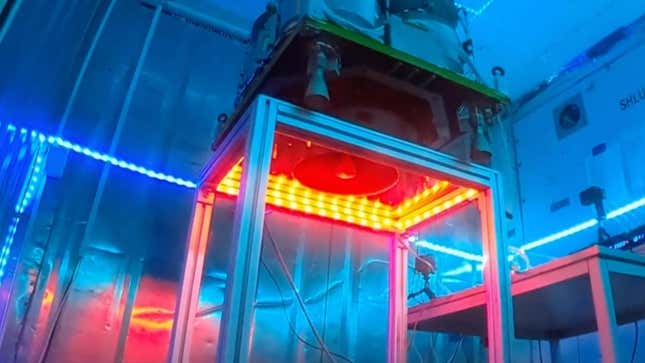
Since launching its first test mission to vaporize bits of an asteroid in space, AstroForge has struggled to keep a hold of its spacecraft and is now at risk of losing the ability to send commands to the in-orbit demonstration.
The California-based AstroForge has big plans: mining asteroids for platinum and processing the materials in space before selling them on Earth for lucrative profit. The company’s demonstration mission, however, has had a series of issues since launch, proving once again that space is, like, really hard.
This week, AstroForge provided a worrying update on its Brokkr-1 satellite demo mission. The satellite launched on April 15 onboard SpaceX’s Transporter-7 mission and immediately experienced a setback. AstroForge had difficulty identifying its satellite among the 50 other spacecraft that were part of SpaceX’s rideshare mission, eliciting the help of other space companies to find a signal from Brokkr-1 20 days after launch.
The company then had trouble deploying the spacecraft’s solar panel array, because the magnetic field generated by its refinery system prevented the satellite’s ability to actively orient it, according to AstroForge.
AstroForge said it had actually discovered the issue with the magnetic field ahead of launch but decided to go ahead with the mission anyway, risking the satellite settling into a wobble that could prevent communication rather than delay the mission by nine months and lose out on the cost of launch. “It was high-risk but even with the decreased communication link margin due to the wobble, we could still complete the demonstration as long as the panels were deployed,” the company wrote in a statement. “However, our analysis and planning did not account for how long it would take to identify our satellite.”
Brokkr-1 satellite launched while preloaded with asteroid-like material that the refinery spacecraft will attempt to vaporize before sorting the material into elemental compounds. The company now has about three months to complete its refinery checkouts and demonstrate the satellite technology before it loses the ability to send commands to the spacecraft altogether.
AstroForge is moving ahead with its second mission, which will launch in 2024 with the objective of pulling off a flyby of an asteroid and taking high-resolution images of it surface. “Demo missions like Brokkr-1 are like the months of practice leading up to a big game,” AstroForge wrote. “In our case, Brokkr-1 was the practice and the big game is our upcoming deep space mission.”
For startups like AstroForge, asteroid mining represents the potential for massive profit, if they can find a way to extract precious resources that are hard to come by on Earth. Platinum, for example, is valued at almost $15,000 per pound. As to whether asteroid mining will actually be worth all the effort, well, that remains to be proven.
For more spaceflight in your life, follow us on X (formerly Twitter) and bookmark Gizmodo’s dedicated Spaceflight page.